발굴, 그리고 부분적 탁본
배우리 / 월간미술 기자
1_카메라 없는 카메라 용어사전
박성덕, 박인성 작가는 카메라의 일반적인 기록이나 일방적인 정보 제공 능력을 중히 여기지 않는다. 아름다운 장면을 포착하는 것에도 관심 없다. 적어도 작업 결과물로 보여주는 것은 그렇다. 카메라가 세상을 들여다보는 도구라는 것에는 이의가 없겠지만 사용하는 방식이 남들과는 조금 다르다. 한 명은 스스로 사진의 필름이 되고, 다른 한 명은 필름이 결코 담아내지 못할 그것의 바깥 풍경을 조망하는 방식으로 카메라를 활용한다. 지난 9월 11일부터 25일까지 문화도모공간 카바레볼테르에 열린 둘의 전시, 〈카메라 용어사전〉은 말하자면 카메라라는 기계에 관한 전시도 아니고, 잘 찍은 피사체를 다룬 전시도 아니었다.
필름 자체거나
박성덕은 본인이 필름이 된다. 빛을 온 몸으로 받아들여, 바깥의 풍경을 전사(轉寫)하는 필름처럼, 그는 자신을 둘러싼 빛, 소리, 환경과 관계성을 장시간 노출로 살갗에 흡수한 다음, 인화지가 될 전시 공간에 튕겨 내보낸다. 마음에 드는 풍경이 있을 때 몸을 잽싸게 세 번 구르면 그것을 영원히 사로잡을 수 있다고 믿었던 사진작가 자크 앙리 라르티그(Jacques-Henri Lartigue, 1894~1986)의 어린 시절 모습1) 같기도 하다. 동물적인 감각으로 퉁겨낸 작품에는 작가의 어떤 판단이나 비유가 없다. 의미도 없다. 있긴 해도 그것이 깔끔하게 재단되어 보이지 않는다. 그래서 박성덕 작가의 작품을 감상하려면, 그가 반사시킨 것들을 그냥 감각기관으로만 받아 소화시켜야 한다. 많은 작가들이 정성껏 조리하고 영양 성분 표기도 해주지만 이 작가는 조리도 안 한 생시금치를 던져주는 셈이다. 성분도 모르고 일단 날것을 씹어야만 한다. 어쩌면 식물이나 필름이 그러하듯 피부로 작품을 흡수해야 하는지도 모른다. 이렇든 저렇든 머리 굴리다간 소화 안 된다.
〈Trouble in the Air〉(2017). 독일의 어느 겨울, 붐비는 사람들 사이로 작가, 아니 카메라가 나아간다. 같은 시공간이지만 모두 다른 차원을 살아내는 사람들―이미 공통감을 잃은―속에서 작가가 유일하게 자신의 존재를 확인할 수 있는 수단은 전화다. 공중전화박스에 도착해 낯선 땅에서 건 전화가 다시 전파를 타고 자신의 휴대전화 벨로 울렸을 때 작가는 잠시 실재하는 자신, 혹은 시간과 조우한다. 아니, 그것이 존재함을 예감한다. (실재와 만나는 방법은 여러 가지. 관람 중 들려오는 뜬금없는 이 벨소리로도 전시장에서 흐르는 시간이 탈구되는 경험을 할 수 있다.) 하지만 필름이 인화 되었을 때 화면이 지시하는 것이 실제 사건과는 전혀 다른 길을 걷게 되듯 작가가 ‘여보세요?’ 혹은 ‘Hallo/할로?’ 하는 순간, 예감만은 가능했던 실재는 언어라는 상징에 영영 갇히게 된다. 그래서 작가는 ‘말’로부터 물러난다. 크리스마스가 상업적인 상술로만 남은 것을 지적하고 싶은 영상이었지만 간단한 설명조차 아낀다. 이방인의 고독함으로, 모두가 남아있는 상징계로부터 물러난 이의 쓸쓸함으로만 남기는 편이 먹먹하게나마 공통감각을 이끌어내는데 훨씬 유리하다. 박성덕이 처음부터 지금까지 끌고 오는 주제도 “시간 안에서 그때그때 정의는 달라질 수 있다”인데 그는 매 상황을 충실하게 피부에 받아 적을 뿐이다.
독일 유학생활을 마치고 차로 대륙을 가로질러 한국으로 돌아온 작가의 로드 트립은 사람 사이를 가로지르는 도시산책자 작업 〈Trouble in the Air〉의 지구 버전이다. 이번에는 자기 몸과 함께 밴을 굴렸다. 그는 태양이 뜨는 방향을 향해 움직이고, 그것이 주는 에너지를 태양열 패널에 모아 생활하며 시간의 경계마다 달라지는 문화들을 지나 대한민국 서울의 표준시로 돌아왔다. 자신의 몸과 밴에는 시간을 거치며 맺어온 관계들에 관한 이야기를 담았다. 그는 전시를 열고 밴을 갖다놓음으로써 한동안 엇나갔던(한국보다 느렸던) 삶의 시계를 고유한 자신으로 돌려놓고 여행을 종료하려고 했지만 아직 그러지 못했다. 만약 전시가 이루어진다면, 그것은 공중전화 벨소리처럼 실재와 가까운 순간을 생성할 것이다. 하지만 중요한 건 그가 아직도 ‘제’ 시간에 돌아오지 못했다는 것이다. 오직 움직이고 있을 때만 그만의 시간이 가능한 건지도 모르겠다. 물론 그가 실재의 시간에 합치된다고 해도 결말은 비극이다. 삶을 끌어온 그만의 시간과 정의는 사라질테고, 작가는 작업을 할 이유가 사라지기 때문이다. 전시장 안을 빙빙 돌며 관람객들과 연신 부딪치기만 하는 〈Relation〉(2014)의 소리처럼, 박성덕은 영원히 돌아오지 못하고 경계에서 쫓겨나고 시간 밖을 겉돌 것이다.
필름 바깥을 보여준다
박인성은 애초에 다큐멘터리 영상을 만들기 위해 카메라를 잡았다. 그런데 이내 미술신scene에는 온갖 문제를 다루는 ‘정의로운 사도’ 다큐멘터리가 과도하게 포진하고 있으며, 세계 어느 곳이든 산적한 이슈를 전시장 안으로 들여오는 건, 문제 해결에 전혀 도움이 되지 않는다는 것을 깨달았다. 오히려 심각한 사안일수록 예술 안에서는 정치적 올바름의 수사로 전락한다. 다큐멘터리가 어떤 의도로 제작되고 상영되는지, 그것이 과연 모든 사람에게 이로운 방향으로 나아가는지에 대한 의심은 보이는 게 많은 학구적인 작가에게 너무도 당연한 것이었고 말이다. 곧 미술 작가로서 자신이 할 일이 아님을 느꼈다. 대신 한 발 물러나 예술과 비예술, 사실과 거짓 양 편을 오가는 수많은 논란을 낳았으며 현재는 아날로그와 디지털, 실제와 가상의 경계에 있는 필름이라는 매체 자체를 탐구하기 시작했다. 곧 작가의 무의식적 조종조차 허용하지 않는 필름 고유의 기호를 발견했고 작업에 적극 활용하고 있다. 영상 〈It is Plural〉(2017)에서 그는 너무 많은 경우의 수가 가능해서 결국에는 어떤 서사도 가지지 못할 필름을 이리저리 맞춰보고, ‘스캔그래피’로 명명된 〈film〉(2019) 시리즈에서는 필름 양쪽에 정렬된 ‘필름구멍’을 그대로 드러내는 필름으로 그 자체의 조형성을 드러내기도 한다. 이들은 결국 디지털 세계에 범람하는 ‘복붙’과 몰개성 속 절대로 사그라들지 않을 아날로그 필름의 위상을 직감하게 한다.
박인성은 박성덕과 달리 사건을 몸에 직접 묻히는, 다시 말해 사건 속으로 직접 뛰어드는 일이 절대 없다. 다큐멘터리를 화면 바깥, 필름 바깥 테두리에서 찾아내듯, 색상조차 편견에 가깝게 학습된 감각 바깥으로 밀어내기 위해 기호화한다. 관념으로 굳어진 기존의 감각을 뒤흔드는 작가만의 방법이다. 그래서 낯선 지시어를 획득한 색상들은 작품 제목, 〈floated〉처럼 어느 곳에 정착하지 못하고 우리가 저마다 다른 방식으로 받아들이는 상황 속을 부유할 수밖에 없다. 흔해빠지고 뻔한 상상이라면 되려 멈추라는 지시들 속에서 평소 우리가 보지 못하는 구조가 드러난다. 모든 사건을 엮어가는 얼개가 말이다. 작가가 보여주기 원하는 “완전한 장면”은 그렇게 자신을 설명하지 않은 채 드러내게 된다.
2_아카이브 없는 아카이브
박성덕, 박인성 작가는 독일 뉘른베르크 예술대학에서 함께 수학하며 작업을 나누던 사이다. 올해 문화도모공간 카바레볼테르 전속작가로 선정되어 서로 잘 알고 있는 구작으로 합을 맞추어 9월 전시를 열고, 이어 카바레 볼테르의 정체성을 살린 신작으로 두 번째 전시를 준비한다. 카바레볼테르는 사진작가 조부 양수학, 화가 부친 양희성의 대를 이어 작업과 기획을 병행하고 있는 양우창이 운영하는 곳이다. 도기다시 바닥, 석고보드 천장, 알루미늄 섀시가 그대로인, 지하 1층, 지상 2층의 레트로한 붉은 벽돌 건물에 자리한다. 2018년, 양우창 작가 본인의 개인전을 시작으로 2019년 정식으로 출범하여 2인의 작가를 초대해 전시를 하며 공간 변화를 이어갔다. 전시는 주로 1층에서 열리며 대면활동이 가능했던 작년까지 2층 일부―한때 미술학원으로 사용된―를 커뮤니티공간으로 활용했다. 지금은 용도가 불분명해진 2층의 적극적인 활용도 기대되지만, 이 건물의 지하가 재밌다. 1층 옆 현관으로 들어가 직선으로 뻗은 계단을 따라 내려가면 전기가 언제 나간지도 모르게 방치된 깜깜한 지하가 나온다. 이곳은 양우창 대표가 과거 사진 작업을 했던 공간이기도 하다. 현재는 양 대표 부친의 방대한 작업세계―울주 반구대 암각화를 탐구한 그림을 비롯해, 초상과 추상을 아우르는―를 엿볼 수 있는 작품, 그리고 그의 학구열을 감당했던 신문과 각종 서적이 먼지와 쌓여있다. 입구 반대편에는 또다른 입구가 있다. 그곳을 통해 지상으로 나가면 외부 화장실이 있고, 화장실과 옆집 담 사이로 난 길을 따라 오면 1층 전시장에 딸린 주방으로 연결된다. 공간 탐사를 이미 끝냈던 박인성은 9월 전시에서 전시 공간으로 활용되지 않았던 싱크대가 남아있는 이 작은 주방에 영상을 설치한 바 있다. 주변 볼거리가 뜸한 울산 신정동 전시장에 관람객이 찾아왔을 때 머무르는 시간이 아쉽게 느껴지지 않도록 12월 전시에서는 동선과 공간 활용을 강화할 예정이다. 특히나 뻥 뚫린 공간이면서, 역사적 자료가 가득한 지하는 눈 밝은 두 작가가 눈독을 들일만한 곳이다. 카바레볼테르가 만약 어떤 힘을 가지게 된다면, 그 힘은 보물들이 묻힌 이 지하에서 나올 거라고 생각한다. 하지만 피사체 자체를 선별하는 일에는 별 관여를 하지 않는 두 작가의 방식대로 카바레볼테르의 역사를 직접적으로 밝히지도 않을 예정이다. 그 힘을 섣불리 깨워 자리에 앉힐 때가 아니라는 걸 작가들은 안다. 자신들이 할 일도 못 되고 말이다. 이들은 다만 각각의 방식으로 새로운 시작을 도모하는 이 공간의 과거와 현재가 어느 하나 누락되지 않도록 작업을 펼칠 계획이다.
시공간을 뒤섞거나
박성덕은 지하를 과거로, 1층을 현재로 설정한다. 끊임없이 굴러가며, 세계에 속하지 않은 고유한 시간을 선사해주었던 밴은 드디어 전시장으로 들어와 1층에 자리하게 된다. 작가는 더 이상 움직이지 못하는 밴이 ‘과거’에 속한다고 생각하는 눈치지만, 작가 자신의 몸처럼 그 자동차 자체가 필름인 이상 멈추어 있어도 계속해서 현재를 생산하고 있다고 보는 게 맞을 것 같다. 차를 전시장 안으로 들여온, 실재를 여는 ‘사고’ 같은 디스플레이는 흐르는 전시장의 시간을 깬다. 차 안에는 조명이 설치되고 이는 지하에 놓이게 될 태양열 패널과 전선으로 연결될 예정이다. 태양열 패널은 지금의 빛 대신 지나가버린 빛, 역사를 흡수한다. 지하의 시간은 이 전시로 봉인 해제 된다. 앞으로는 지하 공간도 현재의 시간을 점유하게 될 것이다. 작가는 지하와 1층의 시간과 더불어 그 물리적 높이의 차이도 뭉갠다. 지하로 내려가는 계단을 여러 개 캐스팅해, 물결치는 결과물을 수평으로 눕히고 사이사이 우레탄 폼을 넣어 지층을 만들어 1층에 설치할 예정이다. 양우창 대표 현재 활동의 ‘근간’이 되는 건물이지만 카바레볼테르라고 명명된 동시에 아이러니하게도 저 멀리 밀려나 순장될 뻔한 과거, 지하의 시간은 현재인 1층과 교차하며 깨진다. 작가는 대륙 여행에 마침표를 찍음과 동시에 새로운 공간과의 관계를 통해 또다른 실재를 향한 여행을 시작한다. 이게 박성덕의 “그때그때” 아카이브다.
자료 바깥을 보여준다
박인성은 지하에 있는 물건을 완성되지 않은, 미래의 아카이브 상태로 내버려두기로 했다. 지하 무덤 부장품 같은 물건들을 바깥으로 꺼내어 공간을 정의하는 순간, 카바레볼테르의 역사는 엉뚱한 방향으로 어그러질 수도 있고, 공간의 아우라가 사라질 수도 있기 때문이다. 아무리 자료들의 행간을 읽는다 해도 누군가가 선정한 자료로 나열된 아카이브 작업을 관람하는 건 태생적으로 밋밋할 수밖에 없다. 그래서 작가는 손대지 않은 자료들을 멀리서는 보이지만 가까이 가면 사라져버리는 ‘수평선’으로 정의했다. ‘완전한 아카이브’는 먼지 쌓인 자료 위에 신기루처럼 나타나게 될 것이다. 작업 계획은 이렇다. 일단 지하의 깜깜한 풍경을 필름카메라로 찍는다. 풍경이 흐릿하게 담긴 필름 위에 핸드폰으로 밝게 찍어둔 지하 풍경을 보고 긁어서 드로잉 한다. 말하자면 과거를 가장 건드리지 않는 방식으로 과거에 생채기를 내서 깨우는 것이다. 그렇게 긁혀서 그려진 풍경은 지하 안 쪽 벽에 설치된다. 작가는 아무것도 고르지도, 바꾸지도 않고, 중첩된 장면으로만 도래할 아카이브로 존재하는 이 공간을 보여준다. 언뜻 보였다 사라지기를 반복하는 수평선은, 어떤 사건이지만 아무것도 이야기해주지는 않는 기존 작업의 그리드처럼 완전한 장면을 구축해갈 것이다.
이 글은 2020년 11월에 머물게 된다. 이건 어디까지나 전시 계획이다. 어느 방향이든, 이 둘은 관람객에게 직접 필름이 되도록, 필름 바깥을 보도록 유도하며 주도적으로 공간과 시간을 읽을 수 있도록 할 것이다.
3_다시 발견한 그림
예술 불모지라고 해도 과언이 아닐 산업도시 울산에는 2020이 다 되어서야 거의 1세대라고 해도 무방할 대안공간이 생겼다. 다소 급진적이고 키치한 임시 이름, “카바레볼테르”는 울산이 얼마나 문화에 목마른 곳인지 알려주는 이름이기도 하다. 하지만 존재의 결은 최근 ‘로컬’과 ‘자생’이라는 키워드를 가지고 남한 여기저기, 구석구석에서 생기는 신생공간들과 비슷하다. 이곳은 앞으로 젊은 예술가들과 시민의 관심을 받고 자라나게 될 것이다. 영리하게 기획된 ‘일반인 비평 프로그램’은 그 물꼬를 텄다. 양우창 대표 개인의 역사도 공간 스스로 보편적인 언어로 설명하기 시작할 것이다.
알고 보면 울산은 눈과 손의 창조적인 감각이 서린 곳이다. 여기에는 선사시대 암각화가 있지 않은가. 하지만 다시 발견된 1971년 후에도 그 감각은 아직 누구 하나 깨운 일 없는 것 같다. 울산이라는 도시와 예술의 연결지점이 딱히 떠오르지 않는 걸 보면 말이다(조선업은 그 후예들이 커다란 ‘배’라는 조각으로 손의 욕망을 채우고 있었던 것인지도 모르지만). 그런데 건물 지하에서 발견한 양희성 작가의 그림들은 분명히 그것을 깨우려는 시도였다. 박성덕과 박인성은 그 시도를 이제 막 발굴해냈다. 그리고 흐릿하게나마 탁본을 떴다. 그러니까 이 탁본을 뜨기 위한 두드림이 건물 터에서 백 년 묵은 예술혼, 그리고 이 고장에서 만 년 묵은 예술혼까지 흔들어 깨우길 기대해본다.
---------------------------------------------------------------------------------------------------------------------------------
1) 폴 비릴리오 / 김경온 옮김 『소멸의 미학』 연세대학교 출판부 2004, 31~34 참조.





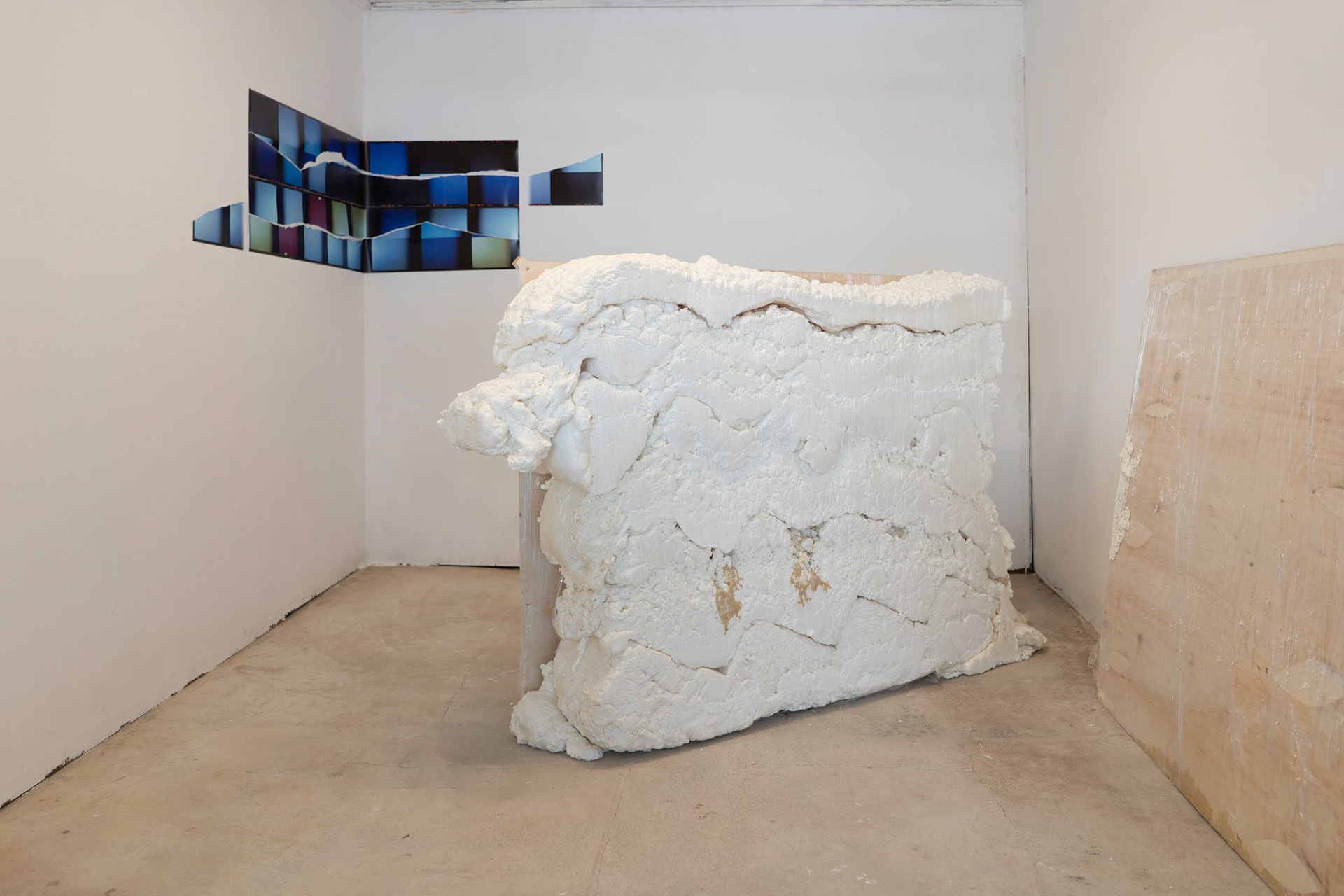









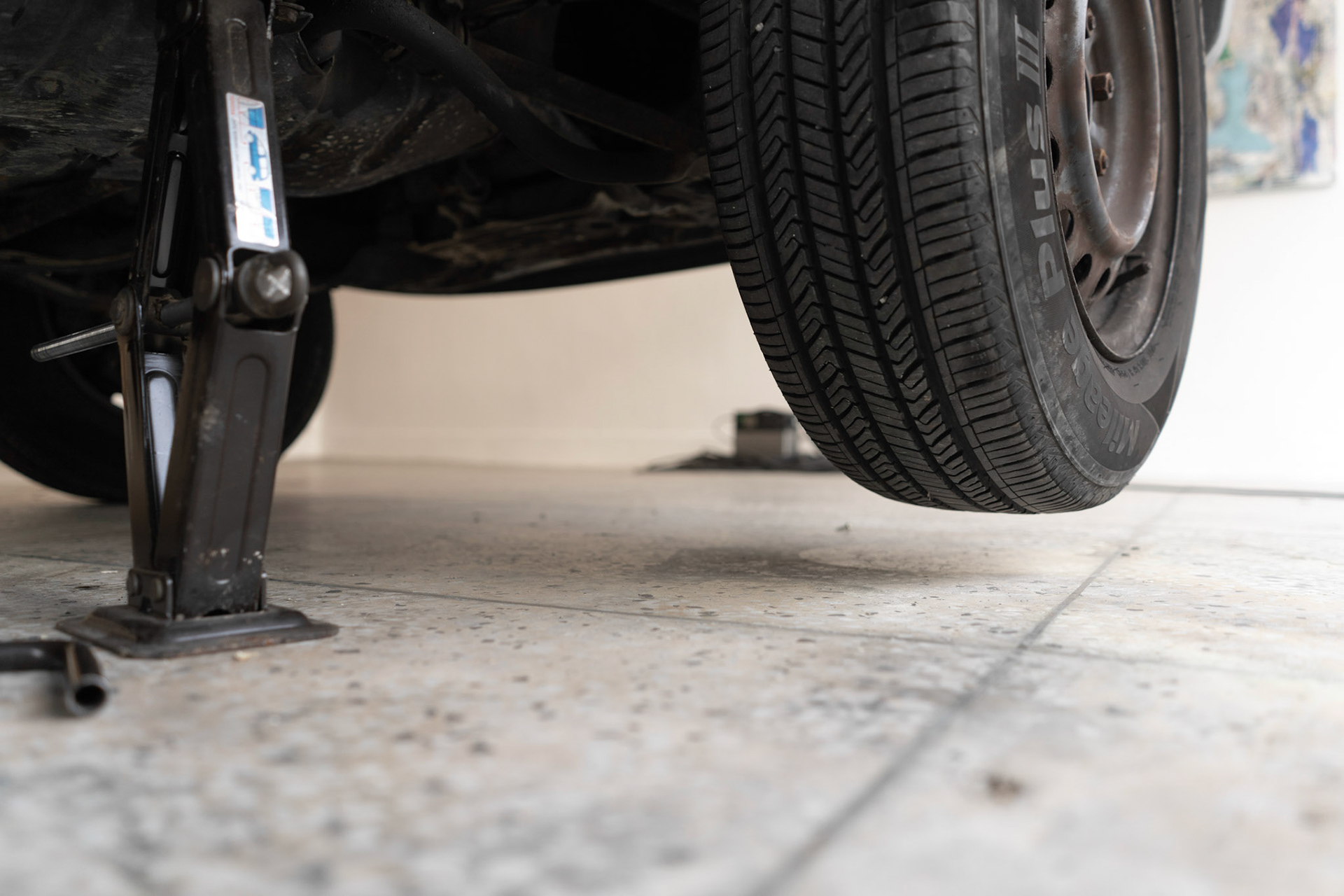
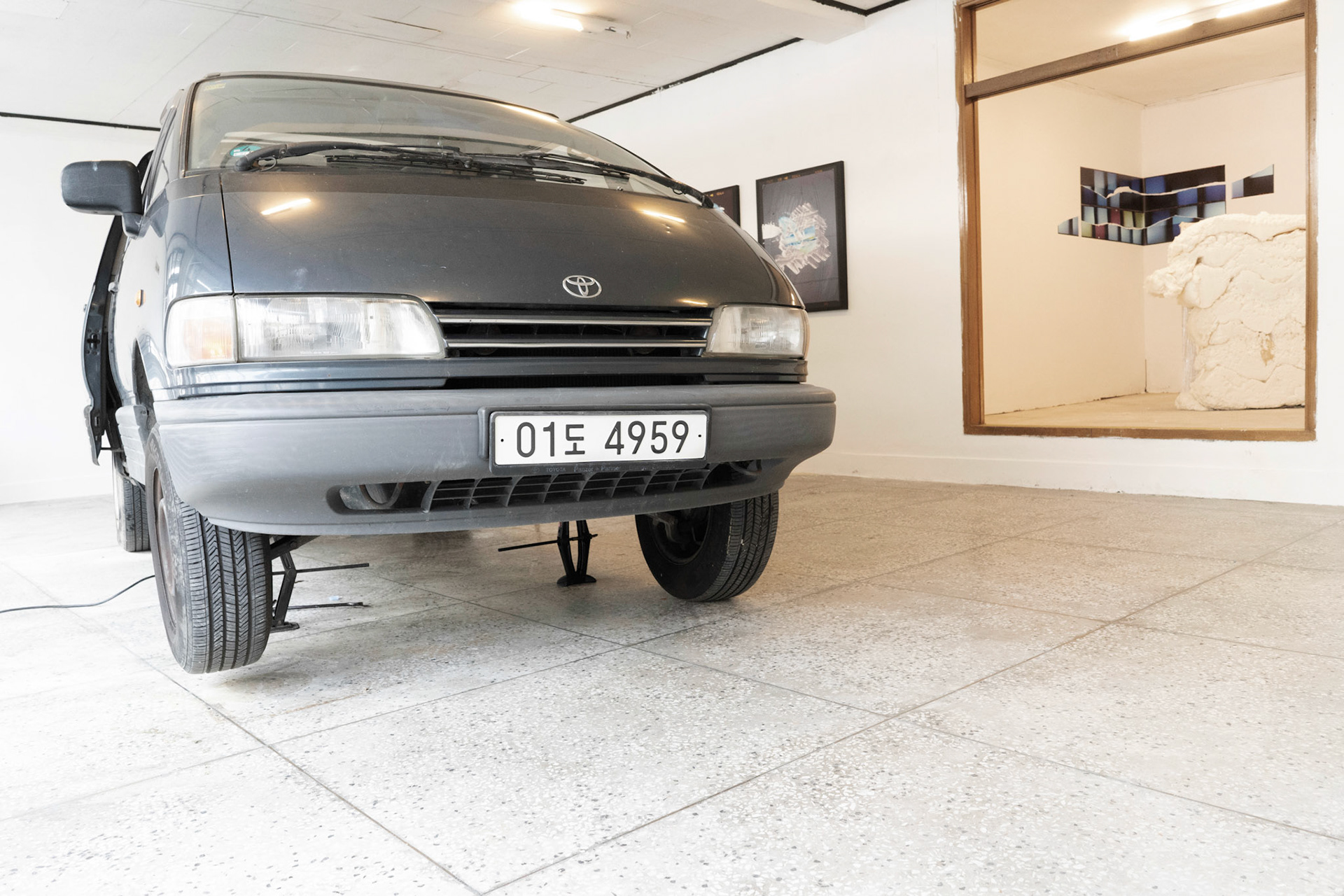











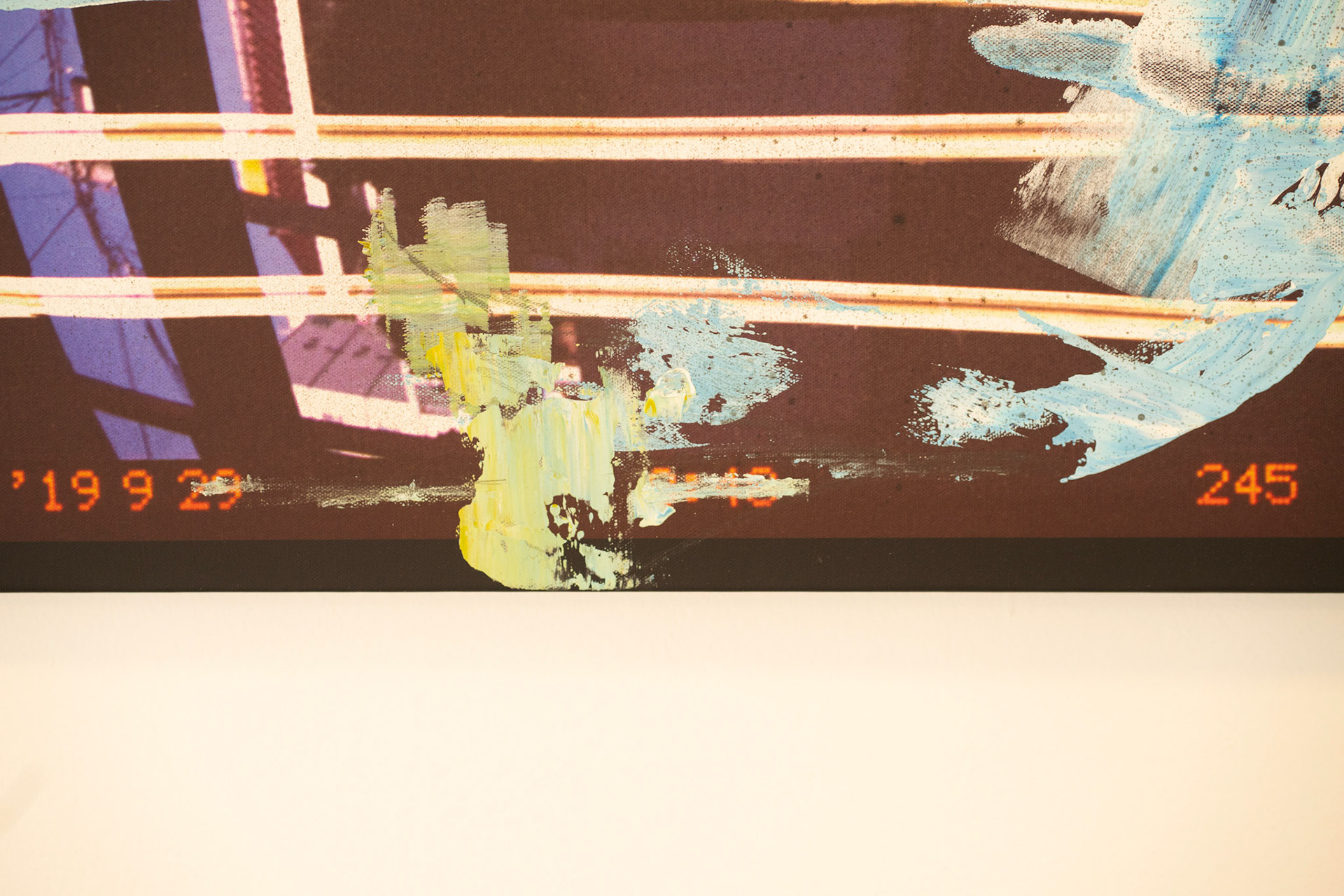
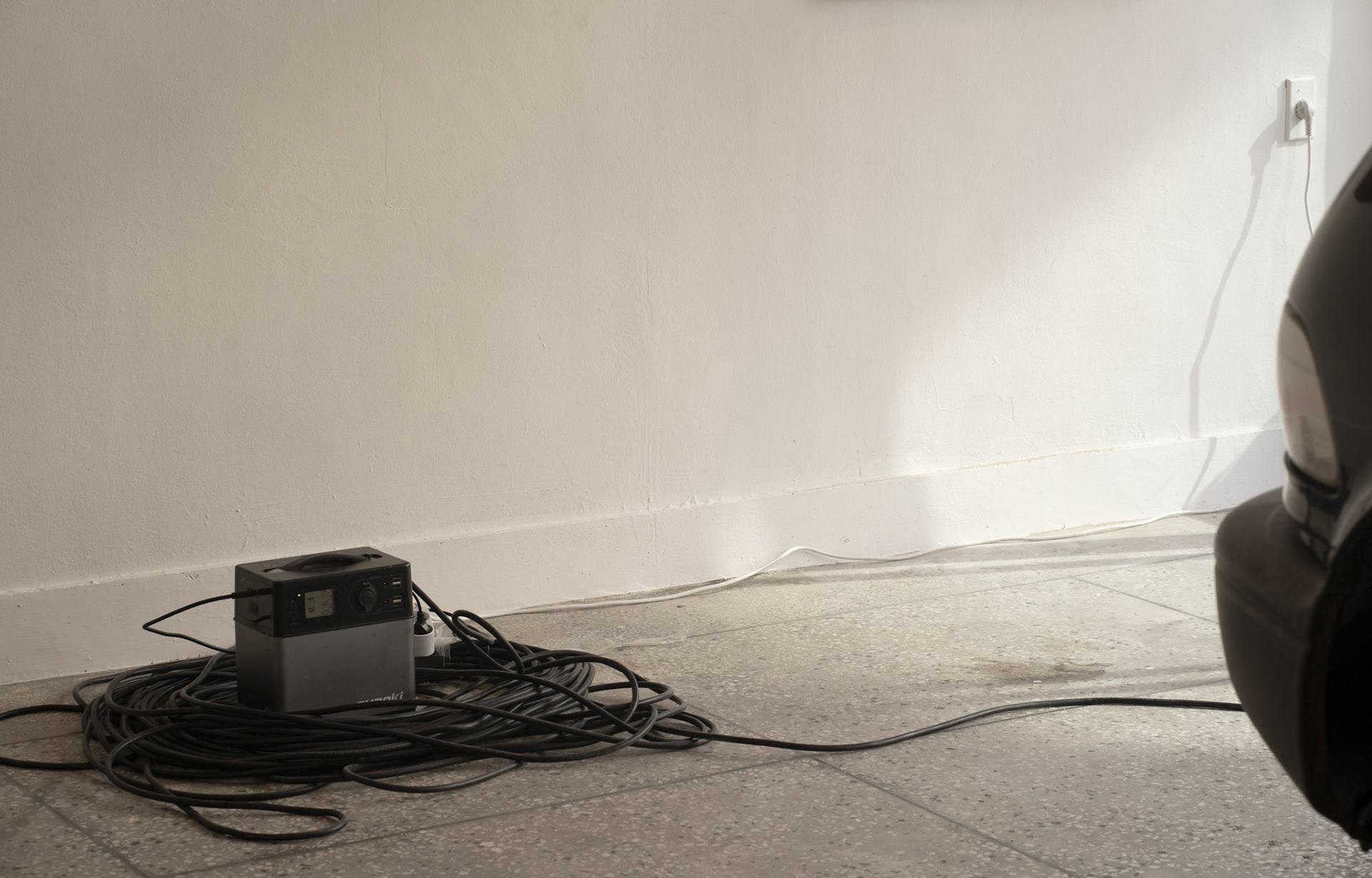






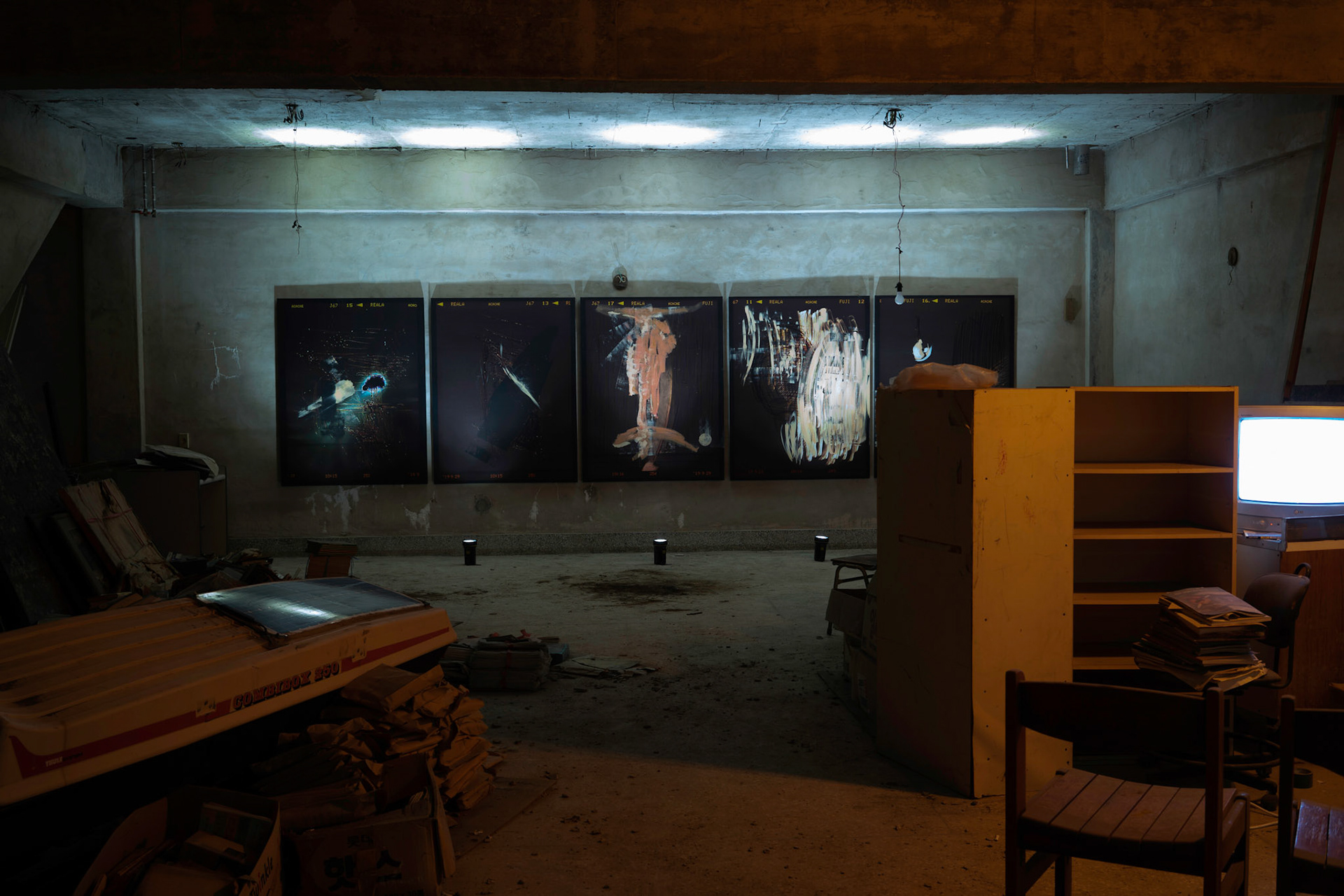


Excavations and partial rubbings
Bae, Uri / journalist of Monthly Art
1_Camera terminology dictionary without camera
Artists Park Sung-duk and Park Inseong do not value the camera's ability to record in general or provide one-sided information. He is not even interested in capturing beautiful scenes. At least that's what the work results show. There is no doubt that the camera is a tool to look into the world, but the way it is used is a little different from others. One person becomes the film of the photograph, and the other uses the camera in a way to view the outside scenery that film can never capture. The two's exhibition, Dictionary of Camera Terms, held at the cultural space Cabaret Voltaire from September 11 to 25, was neither an exhibition about a machine called a camera nor an exhibition about well-photographed subjects.
The film itself
Sungduk Park himself becomes the film. Like a film that absorbs light into the whole body and transcribes the outside scenery, he absorbs the light, sound, environment and relationships surrounding him into his skin through long exposure, and then bounces them on the exhibition space that becomes the photographic paper. send it out It also resembles the childhood1) of photographer Jacques-Henri Lartigue (1894-1986), who believed that if there was a scenery you liked, you could capture it forever by quickly rolling over three times. There is no judgment or metaphor on the part of the artist in the work created with an animal sense. It has no meaning. Even though it is there, it doesn't look neatly cut. So, in order to appreciate artist Park Sung-duk's work, you must simply receive and digest what he reflects with your sense organs. Many writers cook the food with care and list the nutritional information, but this writer is essentially throwing in raw spinach that has not even been cooked. He doesn't know the ingredients and has to chew it raw. Maybe we need to absorb the work through our skin, like plants or film. One way or another, if you keep your head rolling, you won't be able to digest it.
〈Trouble in the Air〉(2017). One winter in Germany, the author, or rather the camera, moves through a crowded crowd of people. The only means through which the author can confirm his existence among people who live in the same space and time but in different dimensions - who have already lost their sense of commonality - is the telephone. When he arrives at a public phone booth and the call he made in an unfamiliar land travels back through the airwaves and rings on his cell phone, the author briefly encounters himself or time. No, I have a feeling it exists. (There are many ways to encounter reality. You can experience the passage of time in the exhibition hall being dislocated even by this unexpected ringtone while viewing.) However, when the film is printed, what the screen indicates is completely different from the actual event. As if walking down the street, the moment the artist asks, ‘Hallo?’, the reality that only a premonition was possible is forever trapped in the symbol of language. So the writer withdraws from ‘words.’ It was a video that wanted to point out that Christmas remains only a commercial tactic, but even a simple explanation is lacking. It is much more advantageous to draw a common sense, even if it is dull, to leave only the loneliness of a stranger and the loneliness of someone who has withdrawn from the symbolic world where everyone remains. The theme that Park Sung-duk has been pursuing from the beginning to the present is “Justice can change from time to time,” and he simply writes down each situation faithfully.
The road trip of the artist who returned to Korea by car across the continent after studying abroad in Germany is the Earth version of Trouble in the Air, a city walk between people. This time he rolled the van with his body. He moved in the direction where the sun rises, collected the energy it gave through solar panels, lived, passed through cultures that changed at each time boundary, and returned to the standard time of Seoul, South Korea. His body and van contain stories about the relationships he has formed over time. He intended to end his trip by opening an exhibition and dropping off a van, turning the clock of his life (which was slower than in Korea) back on its own, which had been off for a while, but he could not do so yet. If the exhibition takes place, it will create a moment as close to reality as a public phone ringtone. But the important thing is that he still hasn’t returned ‘on time’. He may be able to have his own time only when he is moving. Of course, even if he merges with real time, the ending is tragic. This is because the time and justice that led to life will disappear, and the artist will have no reason to work. Like the sound of 〈Relation〉 (2014), which spins around the exhibition hall and repeatedly bumps into visitors, Park Sung-duk will never return, being kicked out of the border and wandering outside of time.
Show the outside of the film
Inseong Park initially picked up the camera to make a documentary video. However, I soon realized that the art scene was overpopulated with ‘just apostle’ documentaries that dealt with all kinds of issues, and that bringing a mountain of issues from anywhere in the world into the exhibition hall was not helpful at all in solving the problem. Rather, the more serious an issue is, the more it degenerates into rhetoric of political correctness in art. It was natural for many academic writers to have doubts about the purpose behind which documentaries are produced and shown, and whether they are moving in a direction that is beneficial to everyone. He soon felt that being an artist was not his calling. Instead, he took a step back and began to explore the medium of film itself, which has given rise to numerous controversies that go back and forth between art and non-art, fact and lies, and is currently on the border between analog and digital, and real and virtual. He soon discovered the unique symbols of film that do not even allow for unconscious manipulation by the artist, and he actively utilizes them in his work. In the video 〈It is Plural〉(2017), he tries to piece together a film that would ultimately have no narrative because so many possible cases are possible, and in the 〈film〉(2019) series, named 'Scanography', he aligns it on both sides of the film. The film exposes the 'film holes' as they are, revealing its own formativeness. In the end, they make us intuit the status of analog film that will never fade away amid the ‘copy-and-paste’ and lack of individuality that is flooding the digital world.
Unlike Park Sungduk, Park Inseong never immerses himself in the case, that is, he never jumps directly into the case. Just as he finds documentaries outside the screen, at the outer edge of the film, he symbolizes even colors to push them outside the learned senses, which are close to prejudice. It is the artist's unique method of shaking up existing senses that have become rigid as notions. Therefore, colors that have acquired unfamiliar referents cannot settle anywhere, as in the title of the work, 〈floated〉, and have no choice but to float in situations that we each accept in different ways. In the midst of instructions to stop imagining things that are common and obvious, a structure that we do not normally see is revealed. This is the framework that ties all events together. The “complete scene” the author wants to show is revealed without explaining itself.
2_Archive without archive
Artists Park Sungduk and Park Inseong studied together at the Nuremberg University of Arts in Germany and worked together. This year, he was selected as an exclusive artist for the cultural promotion space Cabaret Voltaire, and will hold an exhibition in September with a combination of old works that are well known to each other, followed by a second exhibition with new works that highlight the identity of Cabaret Voltaire. Cabaret Voltaire is run by Yang Woo-chang, who carries on both work and planning, following in the footsteps of his photographer grandfather, Yang Soo-hak, and his painter father, Yang Hee-seong. It is located in a retro red brick building with one basement floor and two above-ground floors, with the same porcelain floor, gypsum board ceiling, and aluminum chassis. Starting with artist Yang Woo-chang's solo exhibition in 2018, it was officially launched in 2019 and continued to change the space by inviting two artists to exhibit. Exhibitions are mainly held on the first floor, and until last year, when face-to-face activities were possible, part of the second floor - once used as an art academy - was used as a community space. Active use of the second floor, whose purpose is now unclear, is expected, but the basement of this building is interesting. If you go into the entrance next to the first floor and go down the straight stairs, you will find yourself in a dark basement where the electricity has been left unattended. This is also the space where CEO Yang Woo-chang did his photography work in the past. Currently, works that provide a glimpse into Yang's father's vast world of work - encompassing portraits and abstractions, including paintings exploring Bangudae petroglyphs in Ulju - as well as newspapers and various books that supported his passion for learning are piled up in dust. Opposite the entrance there is another entrance. If you go out to the ground through there, there is an outside bathroom, and if you follow the path between the bathroom and the wall next door, you will be connected to the kitchen attached to the exhibition hall on the first floor. Inseong Park, who had already completed his exploration of the space, installed a video in this small kitchen with a remaining sink that was not used as an exhibition space in the September exhibition. We plan to strengthen circulation and space utilization at the December exhibition so that visitors will not feel regretful about their stay when they come to the exhibition hall in Sinjeong-dong, Ulsan, where there are few nearby attractions. In particular, the basement, which is an open space and full of historical materials, is a place that two bright-eyed artists would pay attention to. If Cabaret Voltaire has any power, I think that power will come from this underground place where treasures are buried. However, in the manner of the two artists who are not particularly involved in selecting the subjects themselves, they will not directly reveal the history of Cabaret Voltaire. The writers know that this is not the time to hastily awaken that power and put it to its place. They can't even do what they do. However, they plan to work to ensure that none of the past and present of this space, each seeking a new beginning in its own way, is missing.
Mixing space and time
Park Sungduk sets the basement as the past and the first floor as the present. The van, which rolled constantly and gave us a unique time that did not belong to the world, finally entered the exhibition hall and took its place on the first floor. The author seems to think that the van, which can no longer move, belongs to the ‘past’, but since the car itself is a film, like the author’s own body, it seems correct to say that it continues to produce the present even when stopped. A display like the ‘accident’ that brings a car into the exhibition hall and opens reality breaks the flowing time of the exhibition hall. Lights will be installed inside the car, which will be connected by wires to solar panels that will be placed underground. Solar panels absorb past light and history instead of current light. The time underground is unsealed through this exhibition. In the future, underground spaces will also occupy the present time. In addition to the time between the basement and the first floor, the artist also combines the difference in physical height. We plan to cast several stairs going down to the basement, lay the undulating result horizontally, and add urethane foam in between to create a ground floor and install it on the first floor. Although it is a building that is the ‘foundation’ of CEO Yang Woo-chang’s current activities, it is named Cabaret Voltaire and at the same time, ironically, the past, which was pushed into the distance and almost buried, is broken by intersecting with the present, the first floor. As the author puts an end to his journey to the continent, he begins a journey toward another reality through a relationship with a new space. This is Park Sung-duk’s “At that time” archive.
Shows outside of data
Park Inseong decided to leave the objects in the basement as an unfinished, future archive. The moment objects such as grave goods from underground tombs are brought out to define the space, the history of Cabaret Voltaire may be distorted in the wrong direction and the aura of the space may disappear. No matter how much you read between the lines of the materials, viewing archive work listed as materials selected by someone is bound to be inherently dull. Therefore, the author defined untouched materials as a ‘horizon’ that appears from a distance but disappears when approached. The ‘complete archive’ will appear like a mirage over dusty data. The work plan is as follows. First, take pictures of the dark underground scenery with a film camera. I look at the brightly captured underground scenery with my cell phone on film containing a blurry scenery, and then scratch and draw it. In other words, it is about waking up the past by scratching it in the most untouchable way possible. The scenery scratched and drawn like that is installed on the wall inside the basement. The artist does not select or change anything, and shows this space existing as an archive that will only emerge as overlapping scenes. The horizontal line, which appears and disappears repeatedly, will build a complete scene like the grid in existing works, which is an event but does not tell anything.
This article will remain in November 2020. This is an exhibition plan after all. In either direction, these two will encourage the viewer to see the outside of the film, allowing them to take the lead in reading space and time.
3_Rediscovered painting
It is no exaggeration to say that Ulsan, an industrial city that is considered a wasteland for art, has had an alternative space, almost the first generation, open in 2020. The somewhat radical and kitschy temporary name, “Cabaret Voltaire,” also shows how thirsty Ulsan is for culture. However, the texture of existence is similar to that of new spaces that have recently been created here and there in South Korea, in every corner, with the keywords ‘local’ and ‘autogenous’. This place will grow and receive attention from young artists and citizens in the future. The cleverly planned ‘Ordinary People Criticism Program’ opened the door. The personal history of CEO Woo-chang Yang will also begin to be explained in universal language by the space itself.
As you know, Ulsan is a place where the creative sense of the eyes and hands shine. Aren’t there prehistoric petroglyphs here? However, even after it was rediscovered in 1971, it seems that no one has awakened that sense yet. Considering that there is no clear connection point between the city of Ulsan and art (although the descendants of the shipbuilding industry may have been satisfying their desires with large sculptures called ‘ships’). However, the paintings by artist Yang Hee-seong discovered in the basement of the building were clearly an attempt to awaken it. Park Sungduk and Park Inseong have just discovered the attempt. And then, vaguely, I made a rubbing. So, I hope that the tapping to make this rubbing will awaken the spirit of art that has been 100 years old in the building site, and the spirit of art that has been 10,000 years old in this town.
--------------------------------------------------------------------------------------------------------------------------------------------------------------------------
1) Paul Virilio / Translated by Kim Gyeong-on, 『Aesthetics of Extinction』 Yonsei University Press, 2004, 31-34.